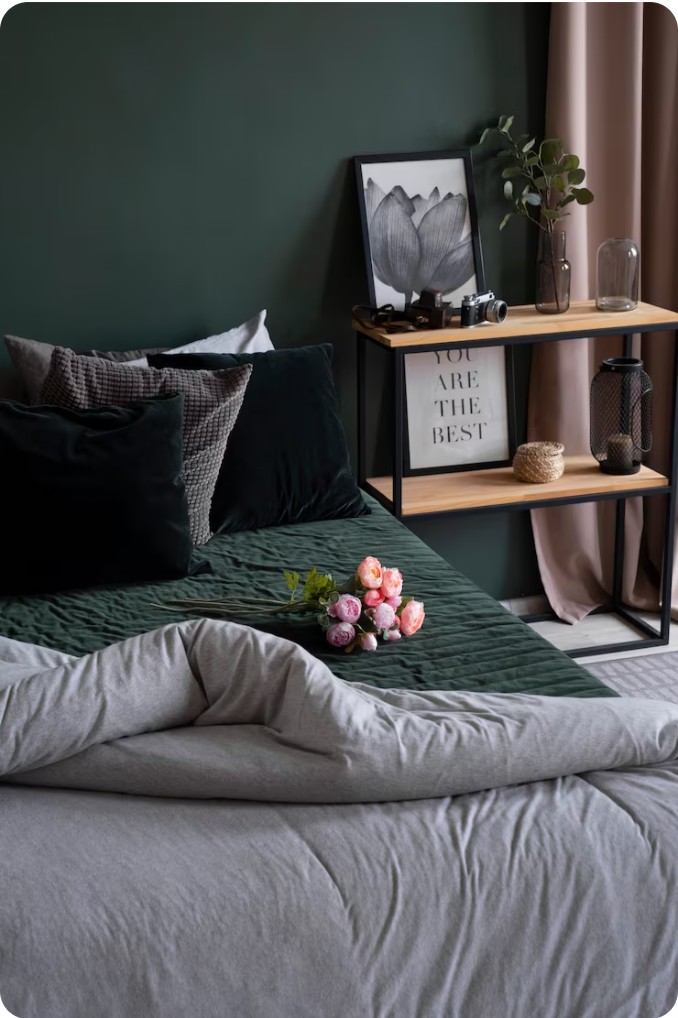
Beyond the algorithms and organic cottons lies the most profound frontier of all: the human psyche. Our bed is the silent witness to our innermost selves—our fears, hopes, and the quiet unraveling of the day. Curating this space is, therefore, not a mere act of decoration, but a form of modern soul-craft, a way to weave a tangible tapestry of comfort and identity that holds us as we journey through our inner worlds.
Part 1: The Bed as a Canvas for the Unconscious
The state between wakefulness and sleep is where the conscious mind loosens its grip, allowing the subconscious to surface. The environment we create directly influences this delicate transition.
- The Texture of Thought: Just as rough textures can subtly agitate, the consistent, soothing softness of well-worn percale or the fluid drape of silk can provide a tactile anchor. This physical predictability subconsciously signals safety, allowing the mind to let go of its hyper-vigilance and wander more freely into the creative or restorative realms of the unconscious.
- Color as Emotional Alchemy: We choose colors not just for style, but for their soul-echo. The deep, enveloping navy of the duvet cover isn’t just a color; it’s a visual metaphor for diving into the depths of oneself. The soft, warm beige of the sheets isn’t just neutral; it’s a blank page for the mind’s own projections, a non-judgmental space for the psyche to process and dream.
- The Archaeology of the Bedside: What lies on the nightstand—a well-loved novel, a journal, a single stem of lavender in a glass—are the artifacts of our inner life. They are silent prompts, guiding our pre-sleep thoughts away from the day’s clutter and toward reflection, imagination, or simple, mindful presence.
Part 2: The Ritual of Unmaking: Permission to Be Vulnerable
The cultural imperative is to make the bed, to present order. But there is a counter-ritual, equally sacred: the conscious, gentle unmaking of it at night.
- The Invitation: The act of turning down the bed—folding back the duvet, fluffing the pillow—is a deliberate gesture of invitation. It is an act of self-invitation to rest, to vulnerability, to surrender. It is a physical way of saying, “This space is now ready to hold you, exactly as you are.”
- The Sanctity of the Wrinkle: In a world obsessed with productivity and polished surfaces, the messy, lived-in bed is a radical act of acceptance. It is a testament to a life fully lived, a body that has rested, dreamed, and perhaps struggled. Honoring the wrinkle is honoring our human imperfection.
Part 3: The Geography of Solitude and Connection
The bed is a unique territory that must fluidly map the geography of our relational needs.
- The Sovereign Sphere: Even in a shared bed, one can cultivate a sense of personal sovereignty. Your chosen pillow, the specific weight of your side of the duvet, the texture of your sheets—these are the boundaries of your personal sleep sphere. They declare, “Here, I am my own self, resting beside another.”
- The Shared Hearth: When the need for connection arises, the bed becomes a hearth. The act of sharing a heavy, woven blanket or intertwining legs under a single sheet is a powerful, non-verbal language of intimacy. The bedding becomes the medium through which warmth, both physical and emotional, is shared and amplified.
Part 4: The Bed of Becoming
We are not the same self each night. Our bedding can be a tool to meet, comfort, and even nurture the evolving versions of who we are.
- For the Grieving Self: Perhaps it is the weight of a heavy, knitted blanket that provides the deep pressure touch needed to ground a scattered and sorrowful soul.
- For the Anxious Self: It might be the cool, slick certainty of a silk pillowcase that offers a sensory focal point, a fixed point of calm in a storm of thoughts.
- For the Creative Self: It could be a set of bedding in a bold, unconventional color or pattern that the waking mind would deem “too much,” but which the dreaming self finds liberating and inspiring.